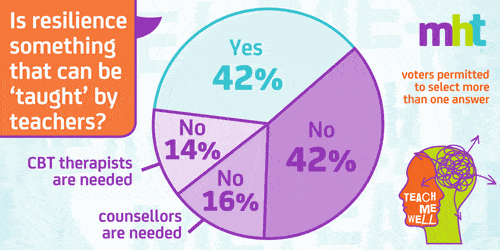Embrace the Adventure: Teaching Your Child the Art of Resilience
Welcome, wonderful parents! Today we embark on an exciting journey together to explore the vibrant landscape of resilience, a character trait that glimmers with potential within our children. Nurturing resilience isn’t just about helping them bounce back from adversity; it’s also about empowering them to flourish and thrive in an ever-changing world. So, let’s dive into this magical quest with smiles, as we uncover practical strategies and heartwarming advice to strengthen our little warriors. Let the fun begin!
Understanding the Pillars of Resilience
What exactly is resilience, you ask? Well, picture resilience as a bouncy ball; it’s the ability of that ball to spring back into shape no matter how hard it hits the ground. For our kiddos, resilience is that elastic force that helps them navigate through setbacks, learn from them, and emerge even more prepared for their next adventure.
Resilience is a tapestry woven from various threads, each as crucial as the next. These pillars include:
- Self-awareness: Knowing who they are, their strengths, and weaknesses.
- Self-regulation: Managing emotions and impulses effectively.
- Optimism: Maintaining a hopeful outlook on life.
- Mental agility: Thinking creatively and flexibly to solve problems.
- Connection: Building strong, supportive relationships with others.
We’ll explore each of these facets and provide you with a toolbox brimming with ideas to support and strengthen these pillars in your child.
Embracing a Growth Mindset: The Foundation of Resilience
Now, before we put on our resilience-building gloves, it’s essential to understand the bedrock upon which resilience rests: a growth mindset. This concept, pioneered by psychologist Carol Dweck, suggests that intelligence and abilities can be developed over time through dedication and hard work. By fostering a growth mindset in our children, we equip them to see challenges not as impenetrable walls but as hurdles that they can leap over with effort and persistence.
Strategies to Instill a Growth Mindset
Here’s how you can nurture a growth mindset:
- Use the Power of “Yet”: Instead of saying “I can’t do this,” encourage your child to add a powerful little word: “yet.” This reinforces the idea that they are on a learning curve, and with time and practice, they’ll get there.
- Emphasize Effort Over Outcome: Applaud the effort they put into tasks rather than the outcome. This encourages them to persist, even when they encounter obstacles.
- Setbacks as Learning Opportunities: Help them view setbacks as essential steps in the learning process, not as failures. Framing challenges as opportunities to grow makes room for resilience to bloom.
Communicating Confidence and Love
One of the most impactful ways you can bolster resilience in your children is by showering them with unconditional love and expressing confidence in their capabilities. This doesn’t mean you need to pave their road with rose petals! Rather, it’s about standing by their side, eyes twinkling with belief, as they navigate the twists and turns of their path.
So, take a moment each day to fortify their spirits with words of encouragement. Let them know that you see their effort, you believe in their potential, and you are there to support them every step of the way. This firm foundation of love and belief creates a safe space for them to take risks and recover from disappointments.
Role Modeling Resilience
Children are perceptive little sponges, soaking up every drop of behavior they observe in their parents. That’s why it’s crucial for us to walk the resilience walk. By openly discussing your own challenges, modeling problem-solving, and demonstrating a positive attitude in the face of adversity, you are painting a vivid picture of resilience in action. Watching you gracefully tackle life’s ups and downs teaches your child more about resilience than any lecture ever could.
Combining our powerful insights with your willingness to guide your child gently along the winding path of resilience is a recipe for success. Together, we will discover more about establishing routines, creating a resilient environment, teaching problem-solving, and fostering social connections in the articles ahead. As we continue our journey toward raising resilient children, remember, you, the remarkable parent, are your child’s most influential teacher, and with your guidance, they will soar!
Let’s keep moving forward with an open heart, equipped with the knowledge that the seeds of resilience we plant in our children today will blossom into sturdy trees tomorrow, capable of withstanding life’s fiercest winds. Stay tuned as we delve deeper into this rich topic in our next segment, and rest assured, you are crafting a future for your child that is both resilient and radiant!

Five Things Parents Should Know When Preparing to Teach Resilience
As we continue our sparkling adventure, let’s sprinkle our knowledge with five essential insights every parent should keep in their treasure chest when preparing to teach resilience to their children.
1. Resilience Needs Repetition
Embedding the spirit of resilience in your child is much like planting a garden. It requires regular tending, nurturing, and patience. Inculcating resilience isn’t a one-off lesson; it’s a series of repeated behaviors and reinforcements. Be prepared for ongoing conversations, continuous encouragement, and the need to revisit core principles in various contexts and stages of your child’s development.
2. Every Child’s Resilience is Unique
Just as each flower in a meadow unfurls at its own pace, every child will develop resilience in their own time and way. Some may naturally show grit in the face of challenges, while others might take a little longer to find their resilient footing. As a parent, recognizing and respecting your child’s individuality is crucial. Celebrate their unique journey and be patient as they discover their resilience.
3. Failure is a Valuable Teacher
Rain nourishes the soil, allowing hidden seeds to grow. Similarly, the experience of failing and making mistakes is a nourishing part of developing resilience. However, this doesn’t mean that parents should set their children up to fail. Rather, it means recognizing that when natural challenges arise, these experiences can be fertile ground for learning and growth.
4. The Right Environment Cultivates Resilience
Create an environment that is like sunshine to young seedlings—warm and conducive to growth. An environment that encourages autonomy, provides opportunities for children to solve problems, and one that fosters secure attachments will cultivate resilience. Remember, you are gardening – do not overprotect them; rather, guide them to find their own strength and capabilities.
5. Balance Support with Challenge
Finally, teaching resilience is like finding the balance between shade and light for plants too tender for the unfiltered sun. Offer your children a balanced mix of support and challenges. Be their safety net, yet allow them room to stretch their wings. This balance helps children internalize the belief that they can handle life’s challenges, with your support as their back-up when needed.
As we anchor these five key insights into our minds, we’re ready to continue nurturing resilience within our children. Every nudge, every conversation, and each moment of shared wisdom weaves a stronger and more resilient thread in the fabric of their growing character.
Stay excited and stay engaged as we venture further into the heart of resilience in our up-and-coming segments. Here’s to creating an environment where resilience thrives, and where every stumble is just another step forward in this dance of growth and learning!
Ready your gardening hats, dear parents. There is much more to unearth and even more to savor as we tend to our greatest and most rewarding challenge yet—the journey of raising resilient children. Our exploration continues, with more strategies, more insights, and endless opportunities to inspire resilience within the young hearts beating with boundless potential.
See more great Things to Do with Kids in New Zealand here. For more information see here
Disclaimer
The articles available via our website provide general information only and we strongly urge readers to exercise caution and conduct their own thorough research and fact-checking. The information presented should not be taken as absolute truth, and, to the maximum extent permitted by law, we will not be held liable for any inaccuracies or errors in the content. It is essential for individuals to independently verify and validate the information before making any decisions or taking any actions based on the articles.




